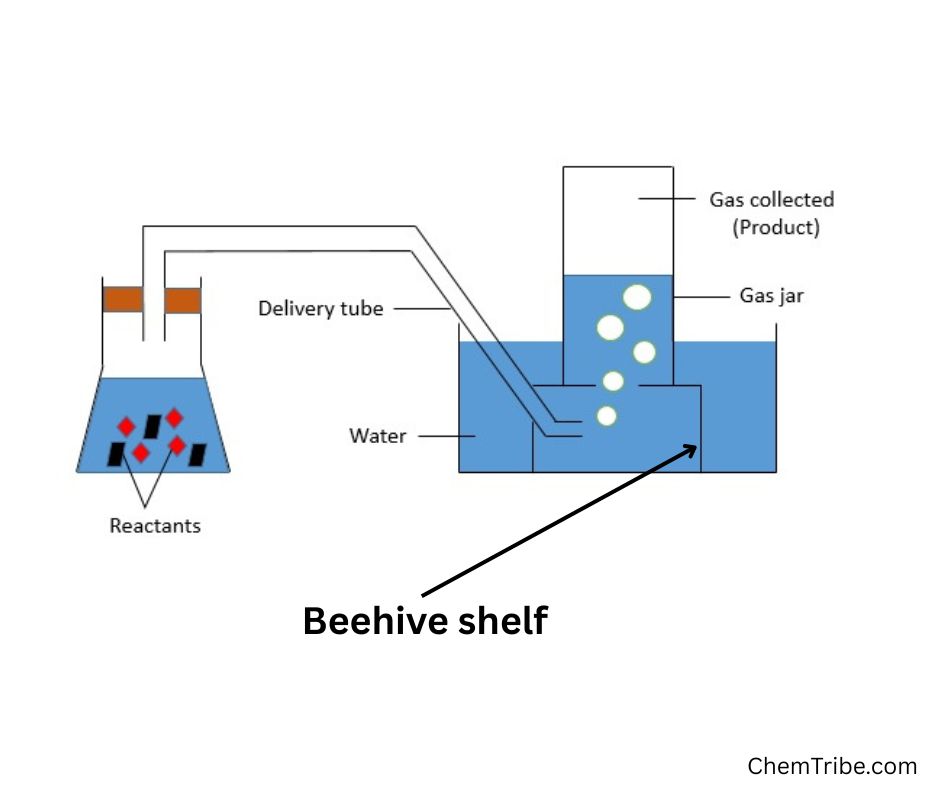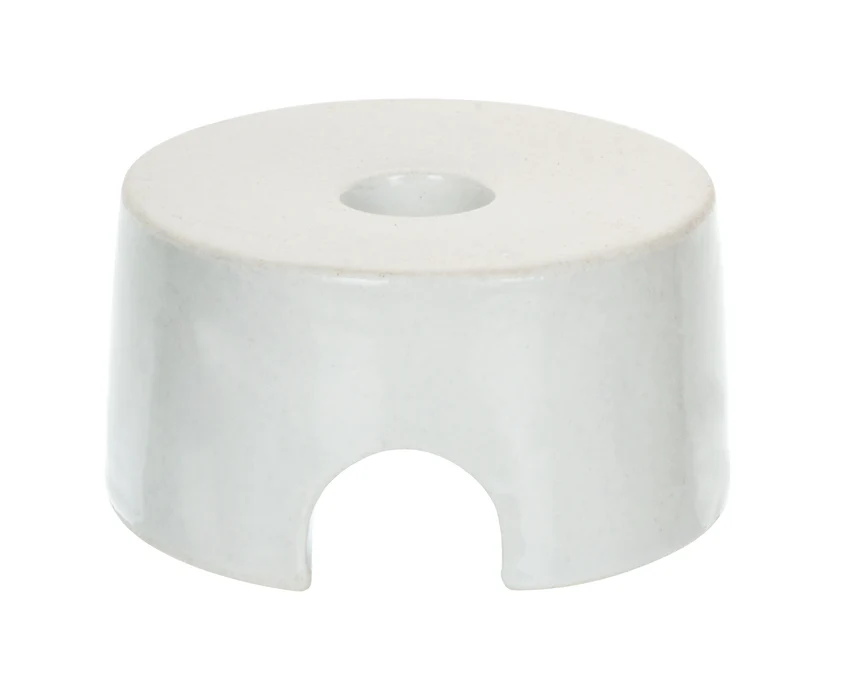
When collecting gas by the displacement method—commonly used for gases that are insoluble or only slightly soluble in water—you typically need a gas jar that is placed inverted in water, as shown in the setup above.
This arrangement allows the gas from the delivery tube to rise and displace the water inside the jar.
To make this possible, the gas jar must rest on a support that allows the delivery tube to pass underneath, and this support is known as a beehive shelf.
So, the beehive shelf’s primary role is to hold the gas jar securely in a pneumatic trough while allowing the gas to enter and fill the jar during collection.
Main Features

The beehive shelf features a short, cylindrical body with a flat, sturdy base that provides stability when placed inside a pneumatic trough filled with water, preventing tipping during gas collection.
At its side is a hole or opening designed to hold the end of a delivery tube securely, allowing gas to pass upward into an inverted gas jar.
Its low, compact design ensures that the gas jar can rest safely on top while maintaining the correct position for efficient displacement of water by the incoming gas.
Most beehive shelves are made of ceramic or heavy-duty porcelain, which resists water damage, chemical attack, and the pressure of supporting glassware.
Safety Precautions When Using a Beehive Shelf
Here are the key safety precautions to remember when using a beehive shelf in the laboratory:
- Inspect before use: Check the beehive shelf for cracks, chips, or defects that could cause it to break under the weight of the gas jar.
- Place securely: Make sure it sits flat and stable in the pneumatic trough to prevent tipping during gas collection.
- Handle carefully: Lift and position the shelf gently to avoid damaging the ceramic or plastic material and to prevent splashing water.
- Align properly: Ensure the delivery tube is correctly inserted through the central hole to avoid leaks or misdirection of the gas.
- Avoid sudden movements: Keep the gas jar and delivery tube steady to prevent water displacement that could cause spills or loss of collected gas.
Apart from these safety tips, strive to adhere to all other laboratory safety rules. Check this post for a quick overview of the basic lab safety rules for students.



